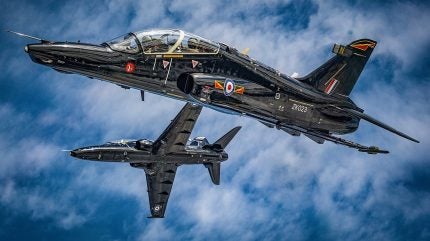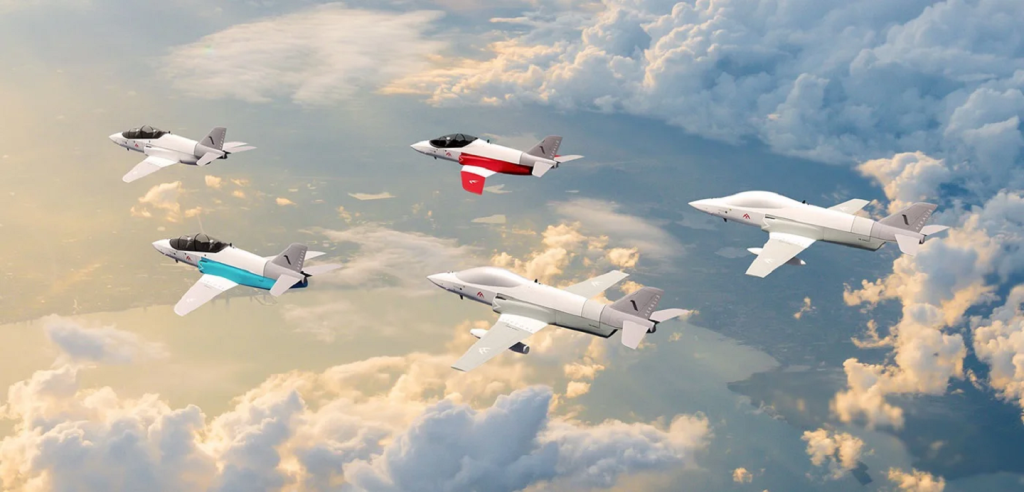
The UK Royal Air Force (RAF) will deliver its Capability Investigation process into the replacement of the current in-service Hawk T2 jet trainer aircraft later this year, intended to provide further information on the costs and timing of the programme.
According to information released by the UK Government, the investigation by the RAF will consider options for aircraft, simulators, and associated live/virtual training for the replacement of the current Advanced Jet Trainer capability.
“The Capability Investigation’s findings are expected later this year and will provide evidence on likely costs and timing of the replacement training solution to the Hawk T2,” stated Defence Procurement Minister James Cartlidge in mid-March 2024.
However, the Hawk T2 jet trainer is scheduled to remain in service until 2040 according to current planning by the UK Ministry of Defence.
Through the month of February, between 6-11 Hawk T2 jet trainers were operational for the RAF, depending on maintenance schedules, from a fleet of 28 airframes. The engine life of the Rolls-Royce Adour 951 engines is currently limited to 1,700 flight hours due to “safety limitations” introduced following the discovery of damage affecting some engine component, stated Cartlidge on 15 March.
Maintenance of the Hawk T2 airframe is provided under the Hawk Integrated Support Solution (HISS) contract (airframe). The HISS Contract price from April 2023 to March 2024 is £56m ($70.6m), according to UK Government data.

US Tariffs are shifting - will you react or anticipate?
Don’t let policy changes catch you off guard. Stay proactive with real-time data and expert analysis.
By GlobalDataAdditionally, the Adour 951 engine is supported by the Hawk Engine Support Solution (HESS) contract. The HESS Contract price from April 2023 to March 2024 is £7.88m.
Meanwhile, in late-February it was revealed that the decision to cancel the Collision Warning System programme on the Hawk trainer was made by the MoD as part of the 2021 Integrated Review, as there was deemed to be no off-the-shelf commercial system available which would fit in the existing Hawk T1 cockpit.
As a result, the MoD was now seeking “the introduction of additional Hawk T1 aircraft transponder conspicuity measures”, for the approximate 14 aircraft remaining. The T1 Hawks, the older model of updated T2 variant, first entered service in the 1970s.
In 2022 a Hawk T1 jet training aircraft crash during flight, with both instructor and pilot student ejecting safely. The cause of the accident was attributed to engine component failure and maintaining failures.
The Hawk T1 aircraft are now only used by the RAF Red Arrows aerobatic display team, with jet training centred on the T2 variant.
UK RAF fast jet training struggles
In late-2022 the scope of the UK’s troubled jet training capacity was revealed, with the disclosure that pilots trained to operate the fifth-generation F-35 Lightning II stealth fighter fleet balanced on a near-one-to-one ratio of platforms to qualified personnel.
At the time, the UK had 27 of the short take-off vertical landing (STOVL) F-35B aircraft and a combined total of 33 pilots able to operate the platform, including three on exchange from the US Air Force, US Marine Corps (USMC) and Australian Royal Air Force.
Of delays to UK pilot training, then Secretary of Defence Ben Wallace told the Defence Committee on November 2022 that “we have gone backwards from when I gave my instruction to the Chief of the Air Staff [Air Chief Marshal Mike Wigston]”.
Issues with UK fast jet training have been widely documented, with UK trainee pilots waiting years in a pipeline plagued by reliability issues with the Hawk trainer jets, among other issues.
On October 2022, James Heappey, Minister of State at the MoD and Minister for the Armed Forces, stated in a written parliamentary response that measures to offset delays in UK military pilot training included sending trainees to Nato Joint Jet Pilot Training in the US, as well as accelerating planning for No 11 Squadron (the joint Qatar/UK Typhoon unit) to train pilots from late 2022 until 2027.
According to official UK Government figures in 2022 the average wait time for RAF trainee pilots from completing the Military Flying Training System to starting their Operational Conversion Units for Typhoon and F-35 is approximately 11 and 12 months respectively.
Additional data revealed the average time between beginning the Lightning II operational conversion course and achieving combat ready status was 20 months, coupled with an on average a gap of 68 weeks between completing Basic Flying Training and beginning Advanced Fast Jet Training for RAF pilots.

During a UK Defence Committee session in January 2024, it was by Simon Barnes, group managing director air, at BAE Systems, that there had been a “transformation” in flight training in terms of the “balance between live and synthetic”.
However, the drive towards the use of synthetic training system to deliver flight training could have a detrimental impact on the country’s aerospace sector, with companies such as UK-based Aeralis pitching training aircraft to the UK military.
In much the same as the National Shipbuilding Strategy sought to revitalise shipbuilding across the UK through investment into sites to increase competition in the naval private sector, so too could a National Aerospace Strategy seek to secure non-traditional aerospace suppliers through programmes such as Hawk T2 replacement.
Additional reporting by John Hill



